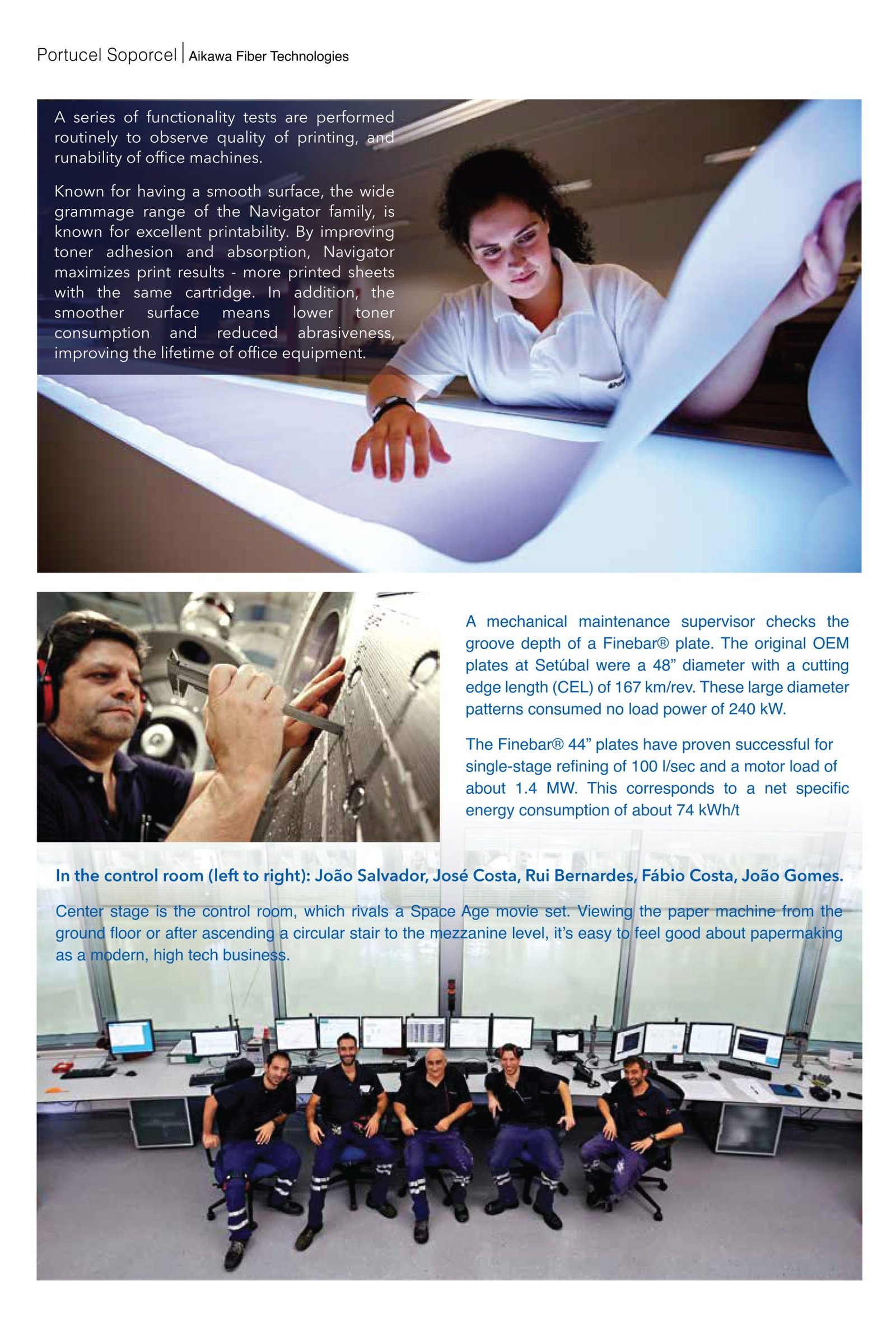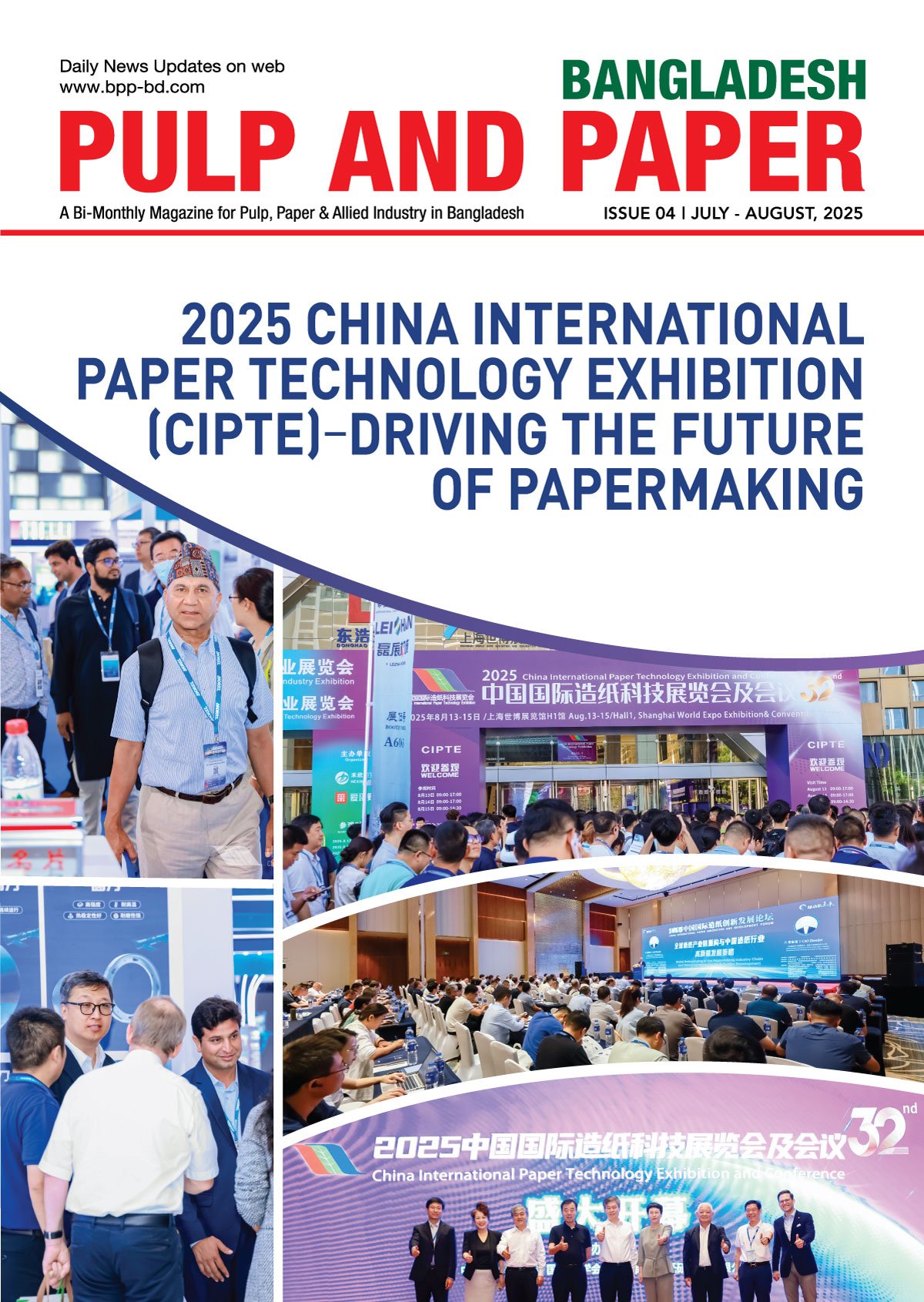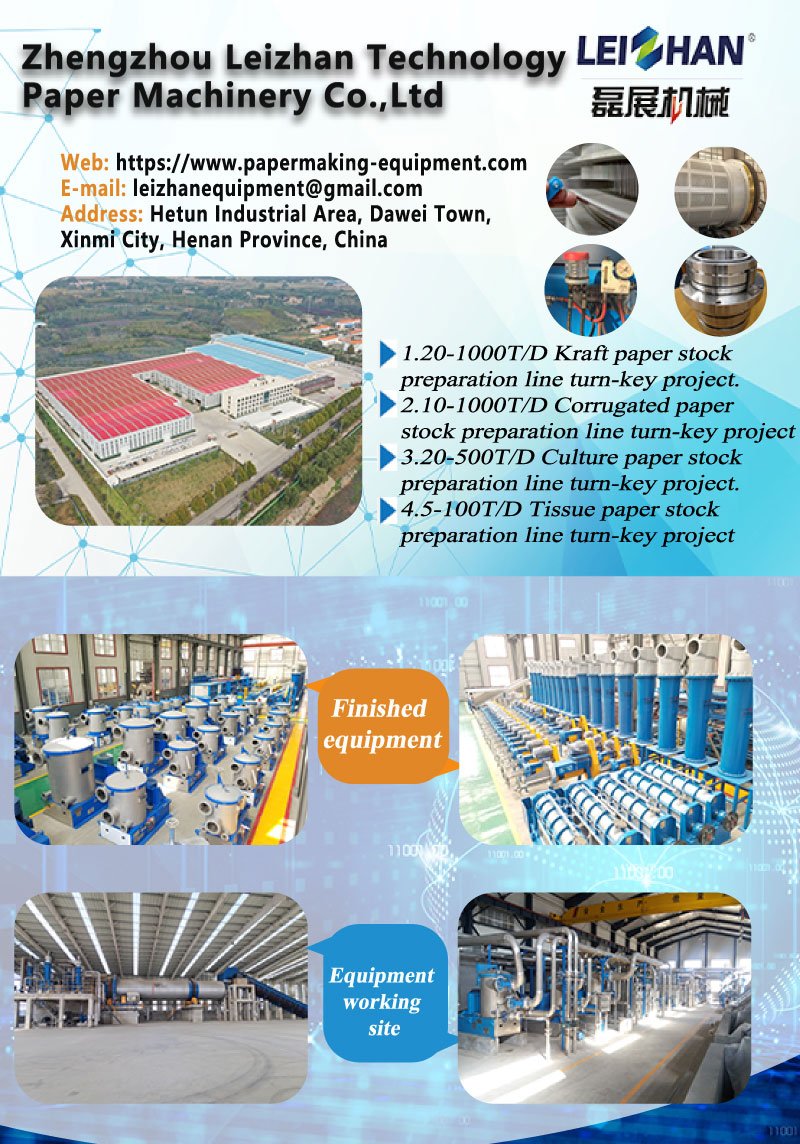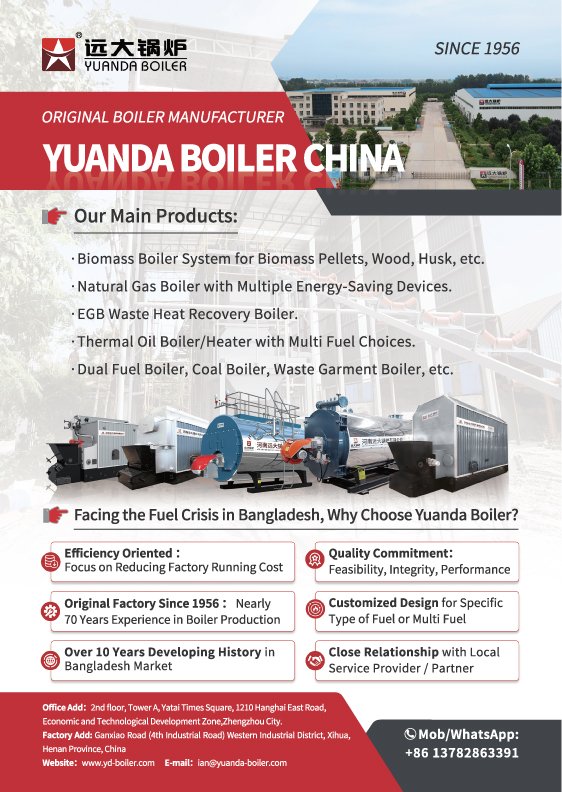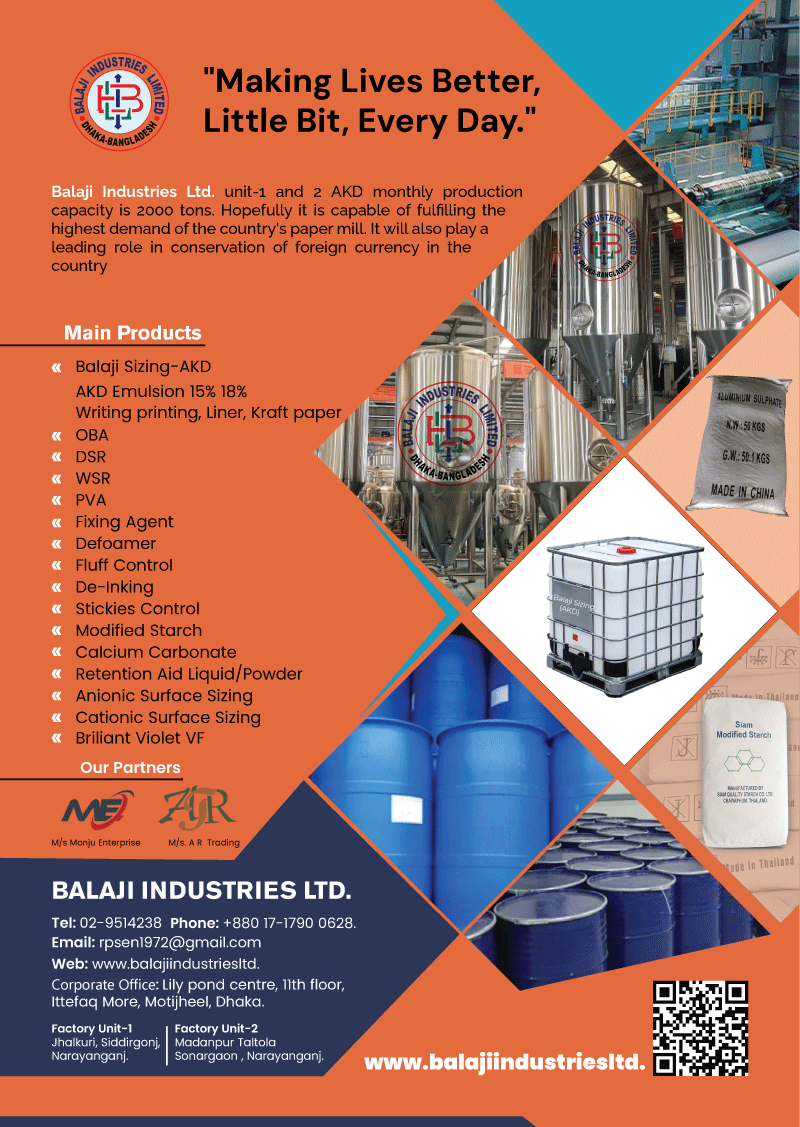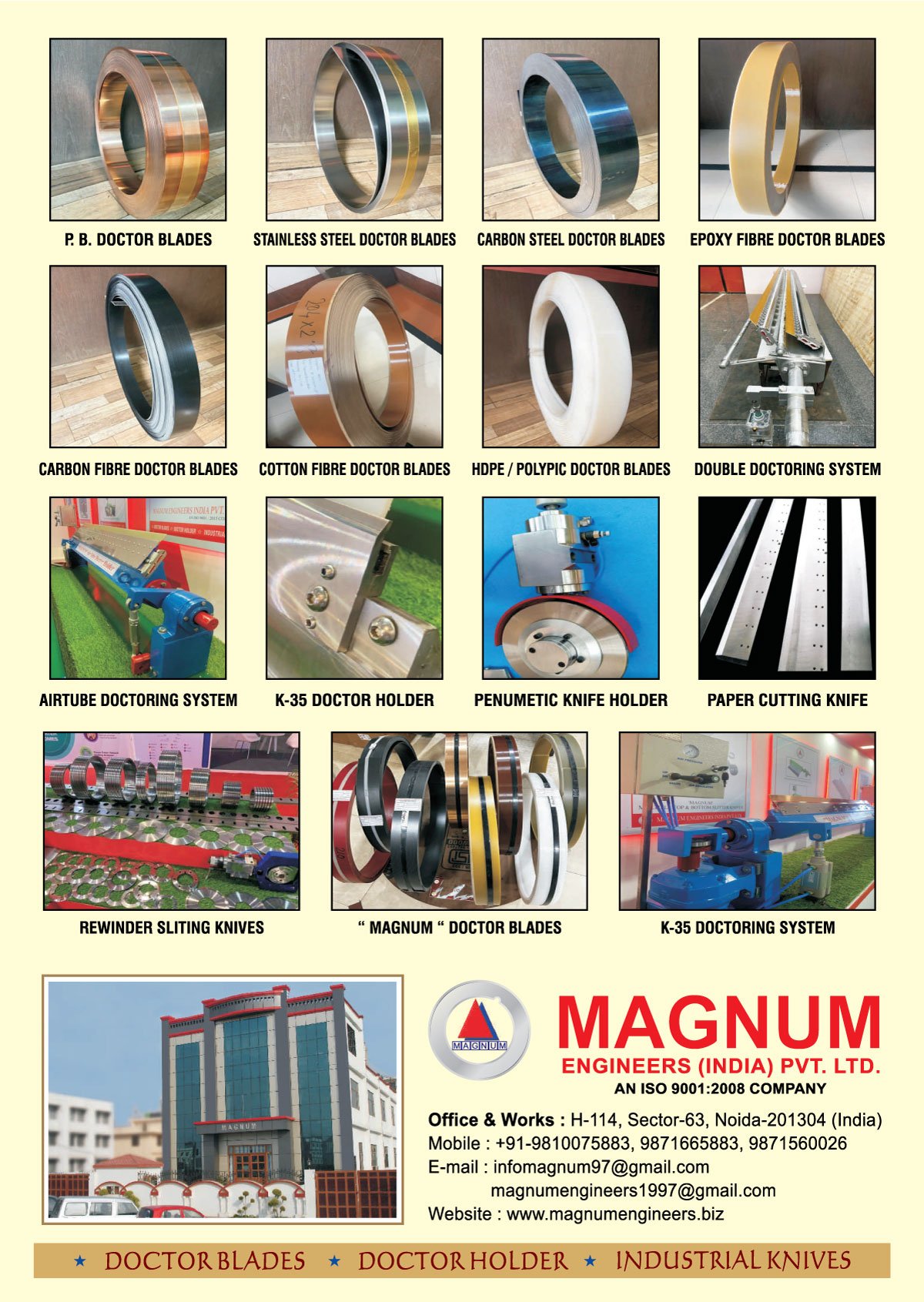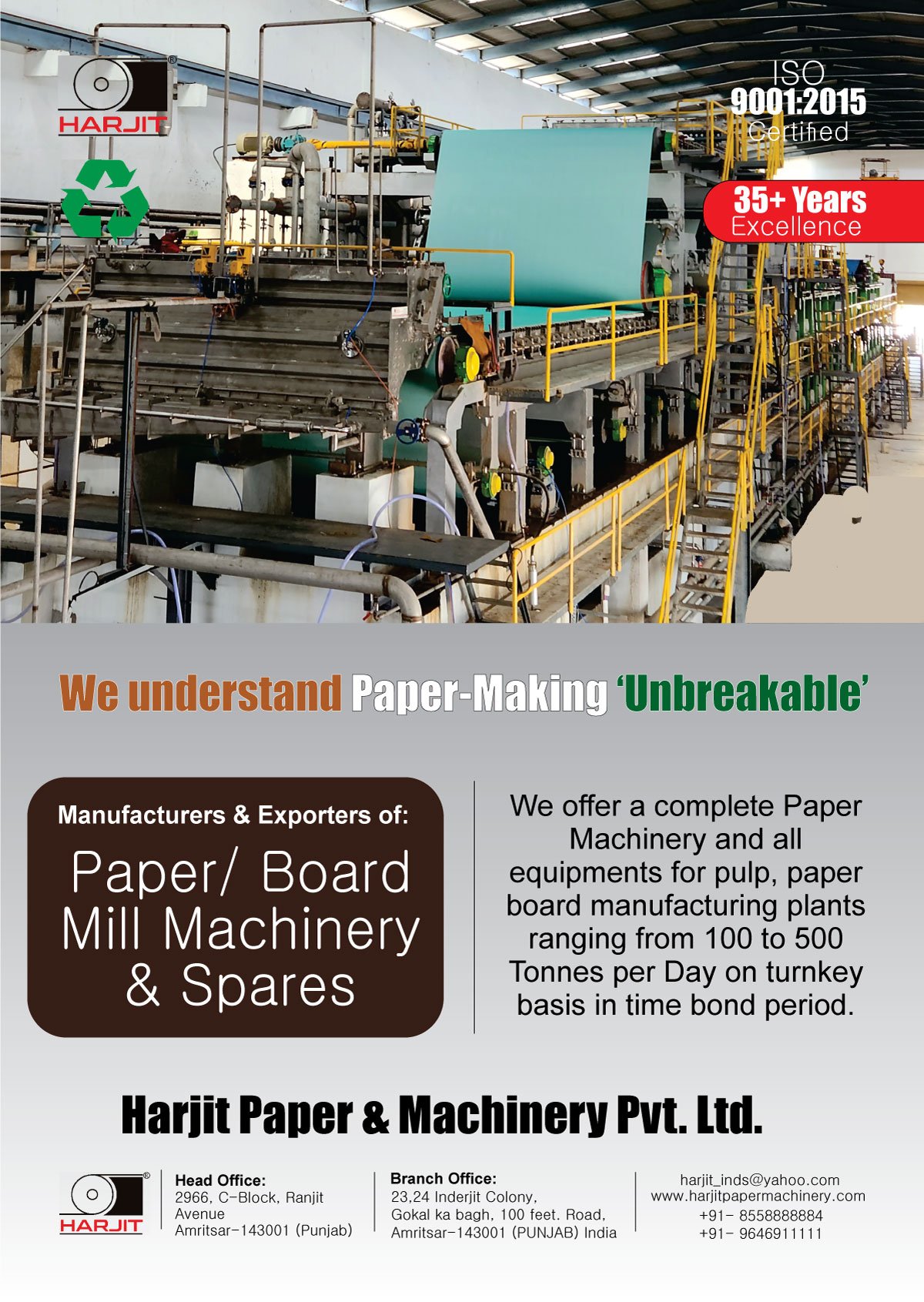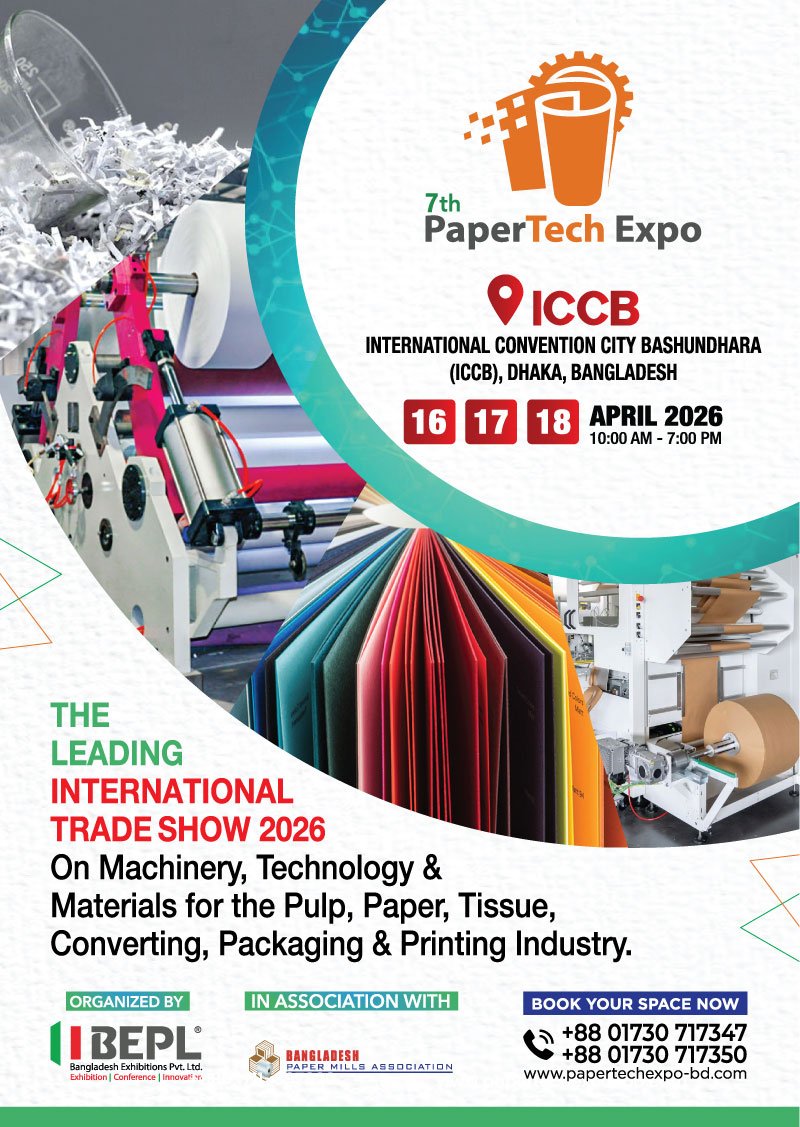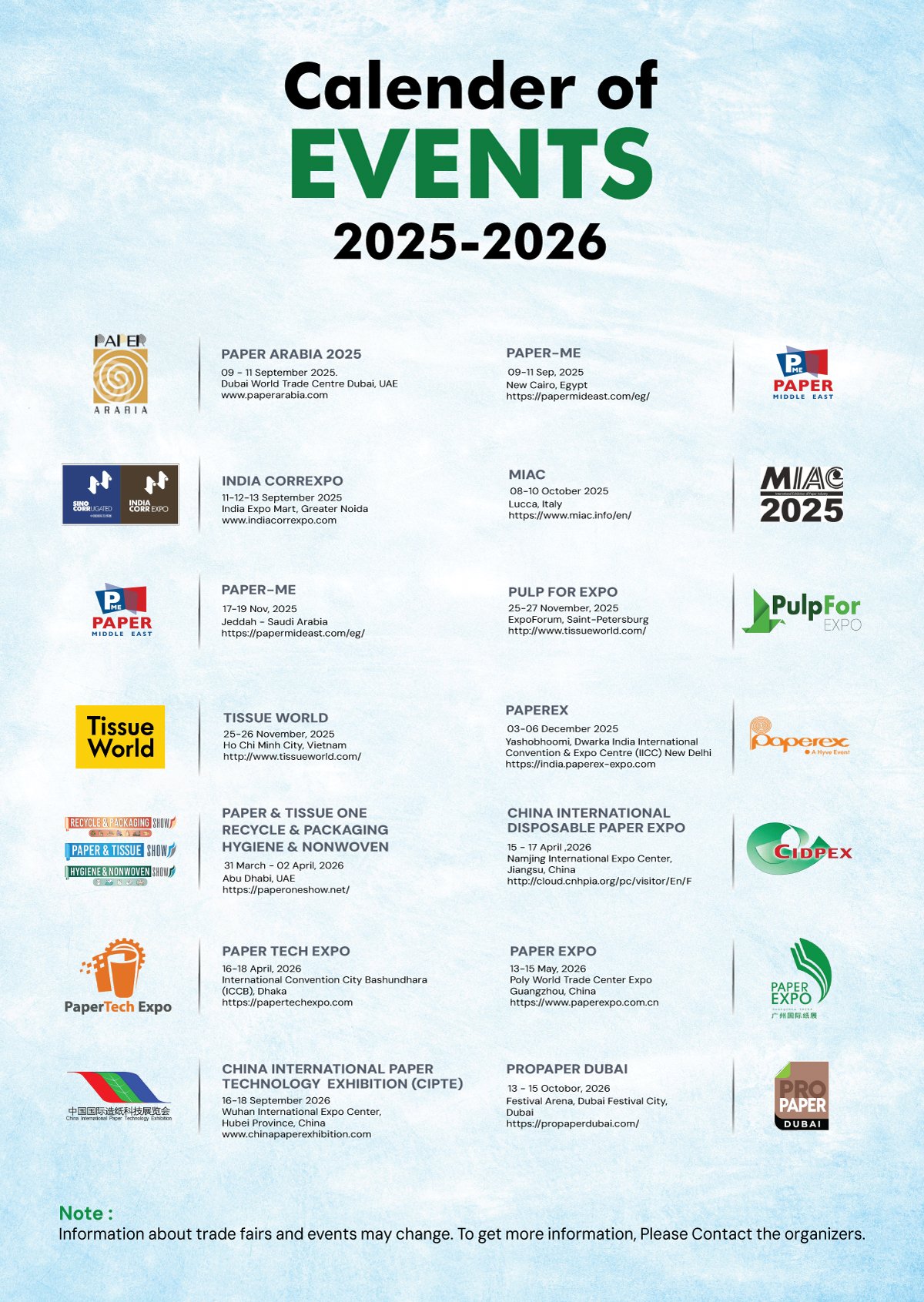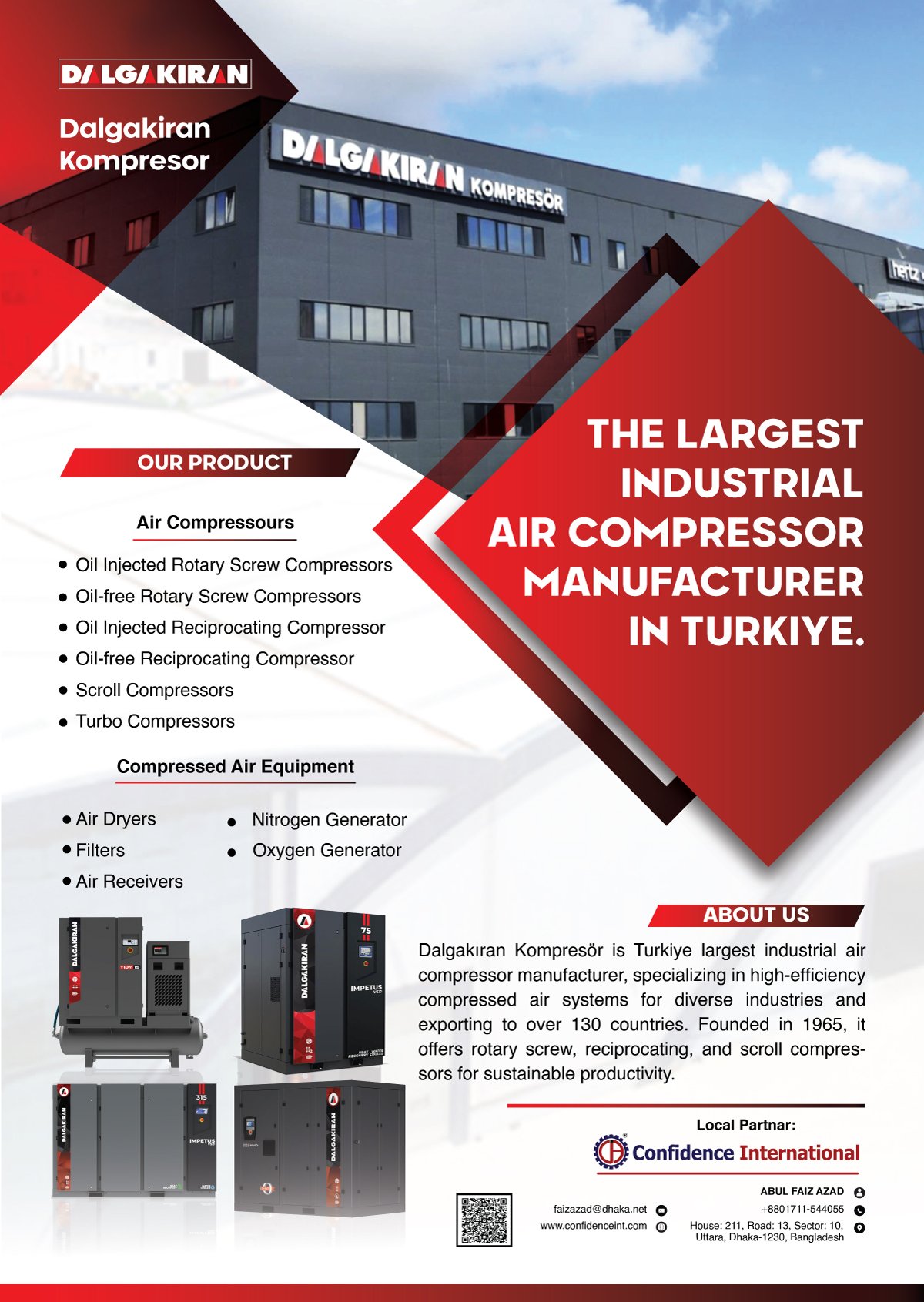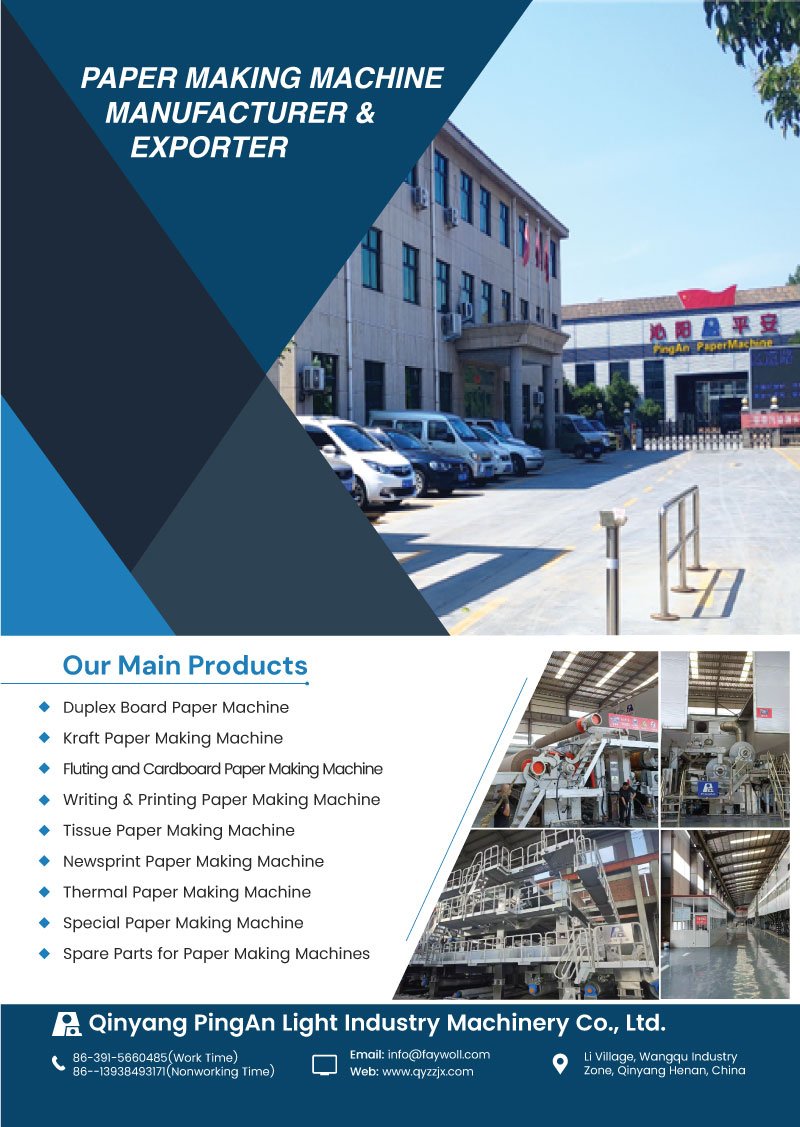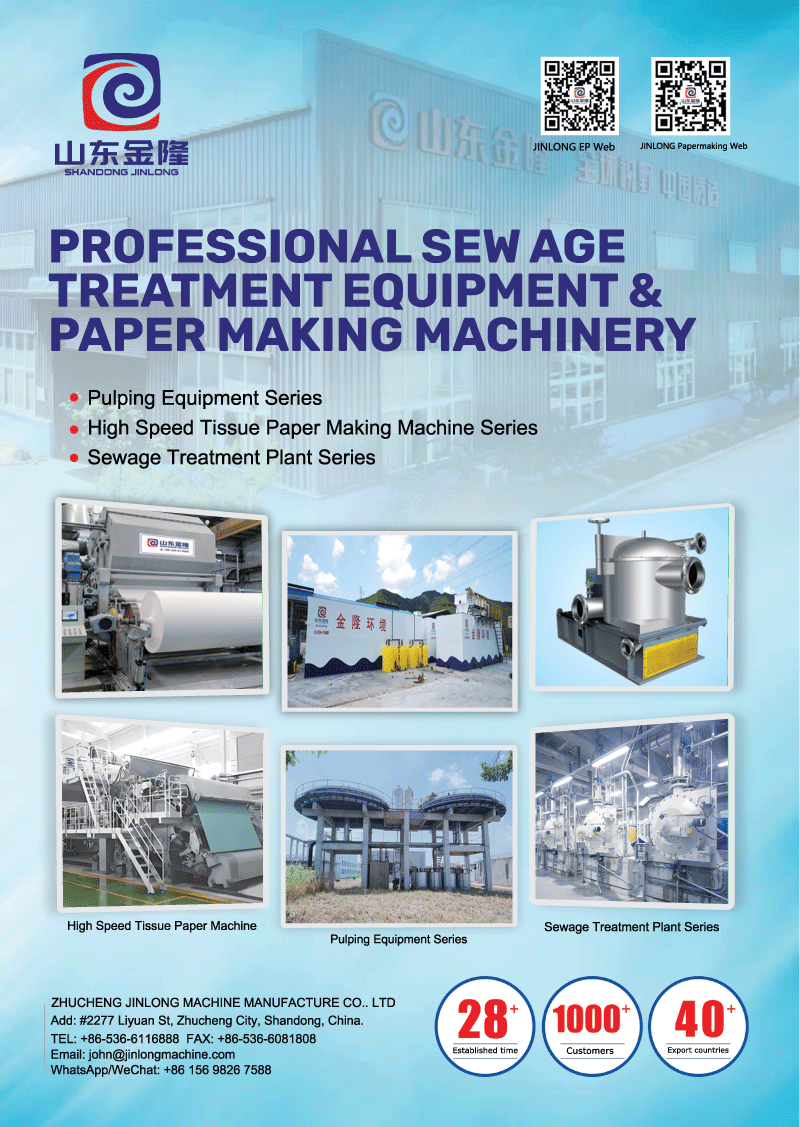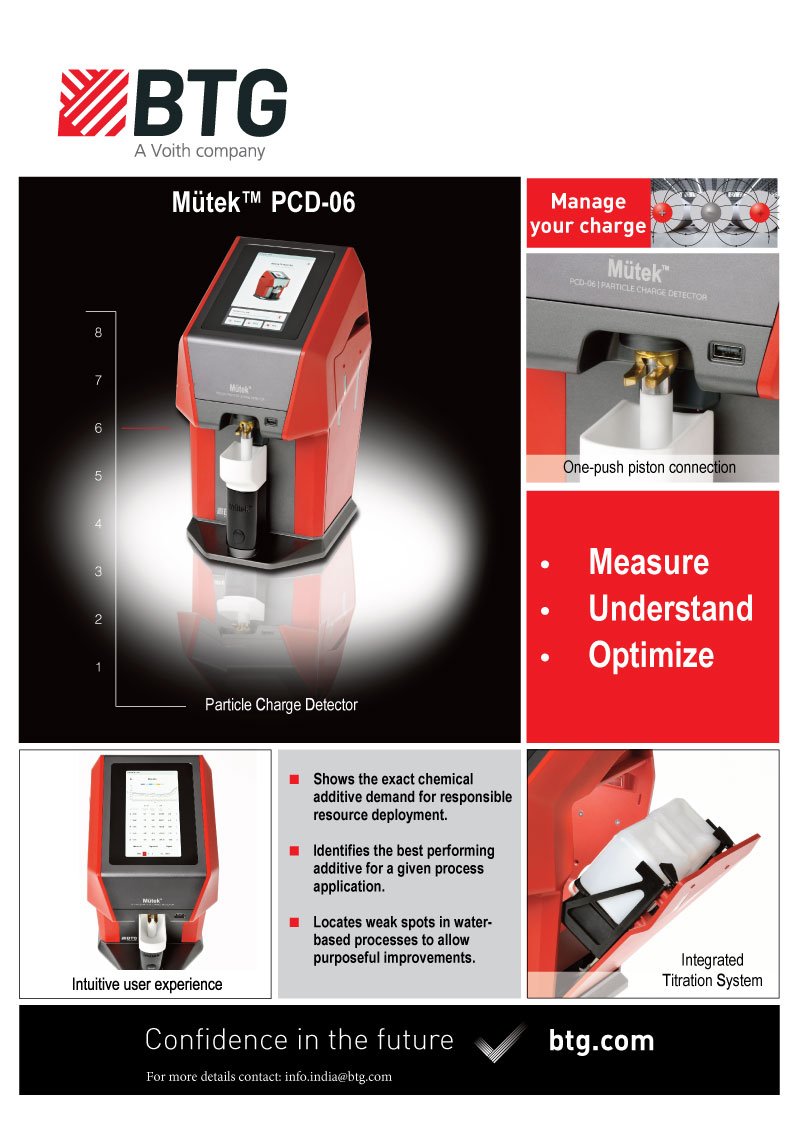Portucel Soporcel refines the future of office Papers

The new PM4 machine in Setúbal mill is impressive at 11 m wide operation speeds to 1,800 m/min. The industrial operations, PM4 itself, and the large, automated converting operation are so unique that Portucel Soporcel Group set up a special subsidiary called About The Future (ATF) for the operation.
Navigator paper delivers high performance imagery and crisp text, and proudly claims to achieve a 99.99% level of jam-free performance. However, for the Portucel Soporcel Group, this is not enough of a target. Management is seriously committed to the three pillars of sustainability: economic, environmental, and making a positive contribution to the communities it serves.
Everything begins and ends with fiber
To achieve these sustainability objectives, one core focus is to extract the full value out of the Eucalyptus globulus fiber which serves as the furnish for Navigator. “The heart of our operations is refining and enhancing the fiber,” says José Luis Matos, Process Engineer. “By gently refining Eucalyptus globulus and eliminating the need for expensive softwood, we deliver high value at a good price. The way we refine our fiber is very special as it also increases PM4’s efficiency. All this contributes to the lowest possible production cost.”
“Thinking energy” lowers “ refining energy”
Matos notes that Setúbal’s creative ideas for lowering energy consumption without impacting fiber quality have their origins as far back as 2005 at the Soporcel facility in Figueira da Foz, where refining trials were directed by Carlos Bras, now Mill Manager at Portucel Soporcel, Setúbal.
The early trials with Finebar® refiner plates not only demonstrated improvements in fiber development, but also led to higher throughput through the stock prep refiners at the same energy consumption levels. “The direct result of this was that we were able to operate with fewer refiners online, significantly lowering our energy bill,” Matos says. “We are following a similar strategy here in Setúbal.”
At the Setúbal mill, the two-stage stock refining process was initially equipped with 48” refiner plates from the OEM. These large diameter patterns had a cutting edge length (CEL) of 167 km/rev and consumed no load power of 240 kW.
It’s no exaggeration to say that Portucel Soporcel’s PM 4 is an industrial wonder of Portugal, and global papermaking. From the onset, this mill was an idea with a destiny—employing local managed forests and local people to deliver a premium product from Portugal to the world. The success of the Navigator brand, a fitting name for a product that travels the globe, proves itself daily on office machines all over the world. Day after day, PM4 runs at very high speed with few breaks. Even though the 11 m machine was designed for 1620 m/min, this speed has already been exceeded.
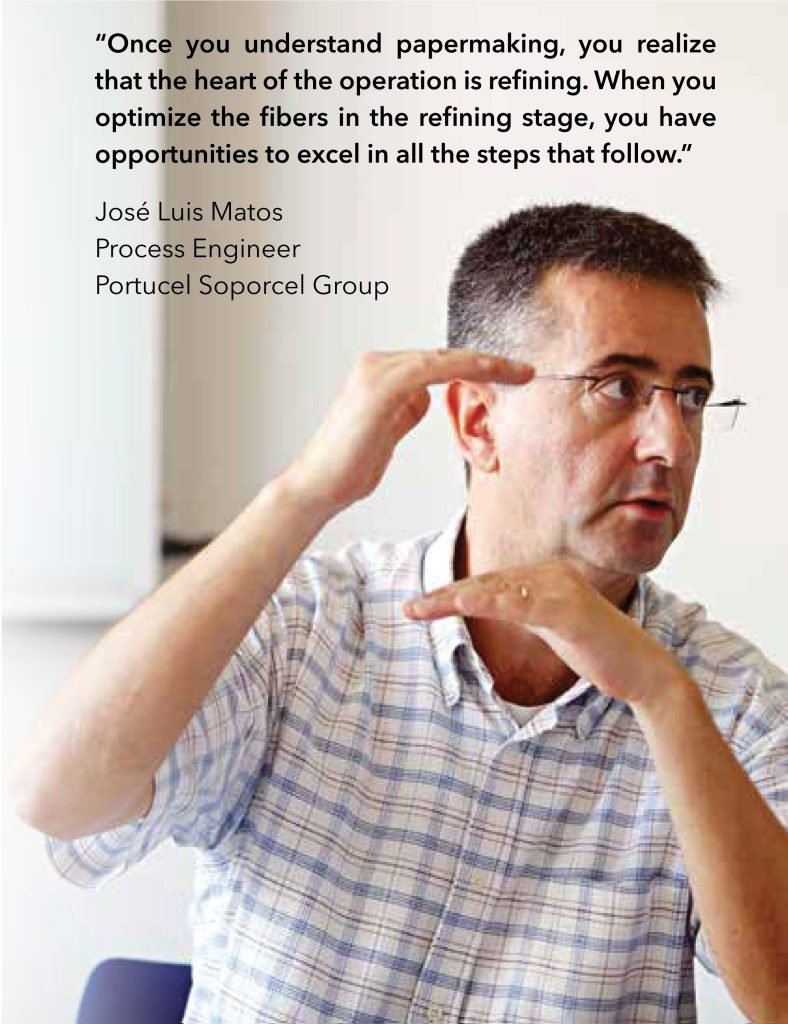
Same throughput, much lower power
After the new stock preparation plant met its performance guarantees, the mill wanted to move to single-stage refining to save energy. Says Matos, “We wanted to reduce the number of refiners in operation to save energy, but we certainly needed the same hydraulic capacity as with all the refiners operating.”
Matos and his team worked with Aikawa Fiber Technologies (AFT), supplier of Finebar® plates, to try several different patterns. They quickly settled on an ultra-low intensity Finebar®
pattern with 44” plates and a CEL of 328 km/rev.
Building on their earlier success at Figueira da Foz, Portucel Soporcel streamlined its stock refining down from eight to three refiners. “When you turn off five 1200 kW motors, energy savings are considerable,” Matos says. “Low-intensity, consistent refining with the Finebar® plates gave us this possibility.”
The 44” plates have proven successful for single-stage refining of 100 l/sec and a motor load of about 1.4 MW. This corresponds to net specific energy consumption of about 74 kWh/t.
 Rubbing fiber the right way
Rubbing fiber the right way
Says Claus Grunow, Applications Specialist for AFT, “In addition to achieving excellent formation and low curl, stiffness is essential to avoid copy machine jams. The Finebar® plates are laser-cut and diffusion-bonded to achieve very fine bar patterns. This enables the refiners at Setúbal to run at ultra-low intensities. The gentle refining action fibrillates the fiber’s exterior, increasing its surface area for improved bonding and strength. Fiber length is preserved and fiber collapse is minimized. This reduces loss of bulk and gives the paper the stiffness it requires to avoid copy machine jams.”
MiniSegment™ lowers costs, increases safety
The plates at Portucel Soporcel’s Setúbal are delivered in a MiniSegment™ design. The idea behind this mill is that a customer only has to replace the working surface of the plates, according to Grunow. AFT provides an adapter plate that attaches to the refiner plate mounting surface through the existing bolt holes. Each MiniSegment™, which weighs a fraction of an entire plate, is bolted to the adapter plate. No modifications to the refiner are necessary.
According to Matos, plate changes are much easier and safer. “One person can position and bolt the MiniSegment to the mounting surface without assistance,” he says.
A refined approach to production
Now that the streamlined stock prep refining process is working successfully, Setúbal is working to optimize the refiners for 100 l/s. Matos says that putting more load on the refiners will require some optimization of the plate geometry. Since the Finebar® manufacturing process allows for great flexibility, this will not be a problem according to Carlos Bayarri, AFT’s representative in Iberia.
“To help Portucel Soporcel’s Setúbal achieve higher throughputs, we can move to an even finer plate pattern,” Bayarri says. “The bar width will be about one millimeter. Our team has already studied the situation at the mill and has run trials in our pilot plant to arrive at a good solution.
“Our patented manufacturing process gives us an advantage. Our plates have very high bar edge lengths, which contribute not only to excellent fibrillation, but also high flow capacities. In addition our material selection and low-intensity aspects lead to very long plate life.”
Says Matos, “Seeking improvements in every aspect of our operations is why we are successful. Continuous improvement is in the details — sometimes very, very small ones. We have learned that when it comes to refiner plates, for example, one
millimeter can make a big difference.”
